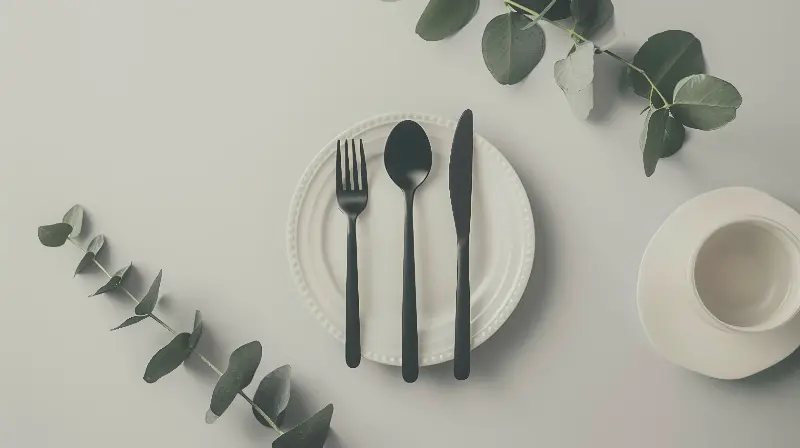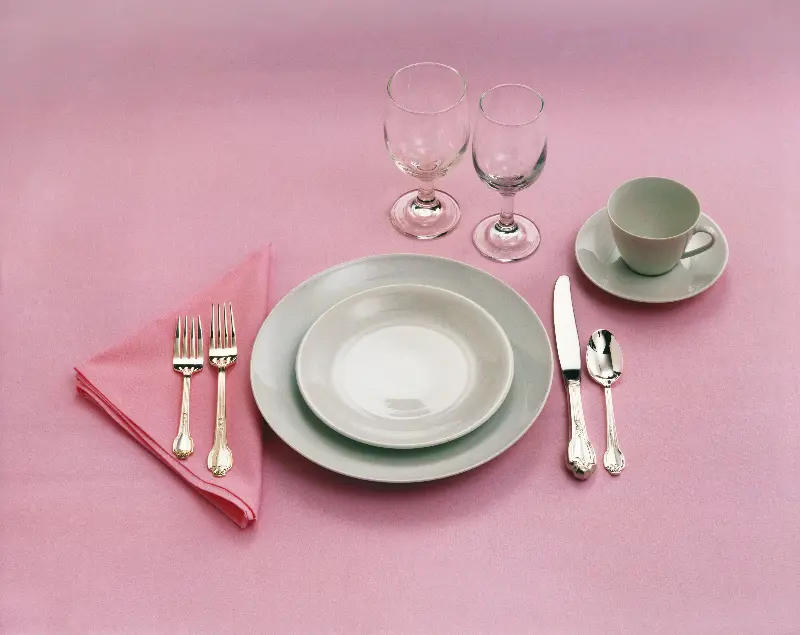
From soup courses to desserts, western dining etiquette can feel like negotiating a labyrinth of cutlery. The art of identifying and using every knife, spoon, and fork is an impressive skill and a nod to tradition and refinement. Whether you're preparing for a formal event, business luncheon, or simply want to elevate your home dining experience, knowing your way around a place setting is both useful and delightful. Let’s uncover the secrets of cutlery and ensure you never feel out of place at the table.
Decoding The Place Setting
First impressions matter, and nowhere is that more evident than at a beautifully set dining table. Western table settings follow specific logic: flatware is arranged in the order of use, working from the outside toward the plate. This means those daunting rows of forks and knives actually serve as a helpful guide through each course.
Usually, the outermost utensils are for the first courses. For instance, a small fork and knife on the outer edge are likely meant for salad or appetizer. The soup spoon, often larger and more rounded than a dessert spoon, sits furthest to the right. The main course cutlery—the largest fork and knife—occupy spots closest to your plate. Above your plate, you may find dessert cutlery, aligned horizontally, ready for the sweet finale.
Getting To Know Your Knives
Knives do far more than just slice steak or butter bread. In fact, western dining sometimes features half a dozen distinct knives for different courses. The dinner knife is the most common: moderately sized, with a subtle, rounded tip good for cutting cooked meats and vegetables.
Steak knives, which are more pointed and have serrated edges, show up when a hearty cut of beef is on the menu. Fish knives are designed to deal gently with flaky fish, featuring a wide, flat blade and a pointed tip to separate flesh from bones effortlessly, often without actually cutting.
Don’t overlook the butter knife, which is smaller, with a blunt and rounded tip, usually found resting atop the bread plate. Its sole purpose is to elegantly glide butter from dish to bread without tearing the crumb. When cheese courses are served, you might encounter a cheese knife—a stubby, often curved blade perfect for soft or hard cheeses.
Forks: More Than Just Four Prongs
The fork is surprisingly versatile and, in formal settings, you may encounter up to five different varieties. The classic dinner fork, largest in the set, is your go-to for the main entrée.
Slightly smaller is the salad fork, shorter and wider for better spearing of crisp greens. Fish forks are even more specialized, typically featuring narrower tines and sometimes a tiny notch to help remove small bones. Dessert forks, sized between a salad and a dinner fork, often accompany sweets or pastries. For seafood lovers, the oyster or seafood fork—narrow and with only three tines—makes it easy to extract shellfish.
A little-known fact: in classic French dining, there’s an “entremet fork,” designed just for eating side dishes or entremets between courses. And some formal settings in Britain might provide both a fruit fork and a fruit knife, for perfectly slicing and eating the fruit course.

Spoons: Beyond Tea And Soup
Spoons do more than simply stir sugar into tea. The soup spoon is the most prominent in formal western dining and is recognized by its large, oval or round bowl, perfect for enjoying broths and creams. There is subtlety here: a consommé spoon is shallow and round; a bouillon spoon is a bit deeper.
For desserts, the dessert spoon is perfectly balanced—not as large as a soup spoon, but bigger than a simple teaspoon. Teaspoons and coffee spoons, petite and dainty, are used for stirring hot drinks or enjoying delicate desserts like crème brûlée. Fish knives and forks sometimes travel alongside a special “shellfish fork,” smaller and narrower than standard styles, essential for prying out juicy morsels.
An interesting twist you may spot is the grapefruit spoon, with its serrated edge for scooping citrus, and the caviar spoon, made from mother-of-pearl to avoid tainting delicate flavors.
Dining Etiquette In Action
Once you’ve identified the right tool, knowing how to use it is equally important. In traditional western etiquette, cutlery is held in a very specific way—fork in the left hand, tines down, knife in the right, cutting and then eating with the fork. This is known as “continental style.” In “American style,” you switch the fork to your right hand after cutting.
When you pause between bites, rest your fork and knife on your plate in an inverted V (fork left, knife right, tips touching). Finished? Place them side by side, diagonally across your plate from the bottom left to the top right. Never leave utensils crossed, as it can signal to the server that you are still eating.
Elevate Your Home Dining Experience
Mastering western cutlery isn’t only about impressing at formal gatherings—it’s also about enjoying the ritual and artistry of dining. Investing in a few specialty pieces, such as a proper set of steak knives, fish forks, and soup spoons, can turn even a simple meal at home into an occasion.
For families, teaching children about cutlery and table etiquette can turn mealtime into a small celebration and foster an appreciation for cultural traditions. Even casual dinner parties can be more fun when guests feel confident navigating their knives, forks, and spoons.
Unlocking the mysteries of western dining etiquette might seem daunting at first, but with a little practice, you’ll soon handle every fork, knife, and spoon like a seasoned connoisseur. The next time you sit down to a formal meal, you’ll dine with ease, confidence, and perhaps a newfound curiosity about the stories every piece of cutlery could tell.
